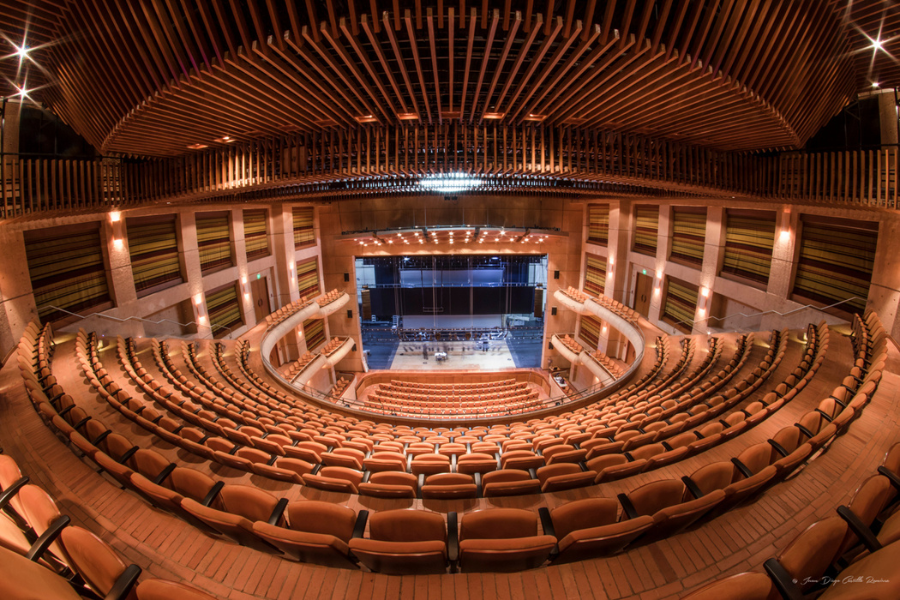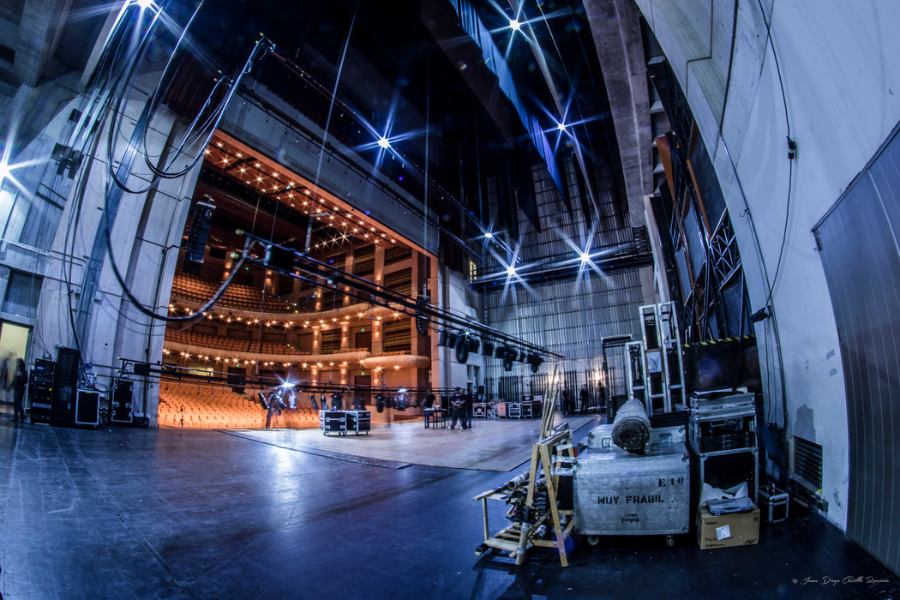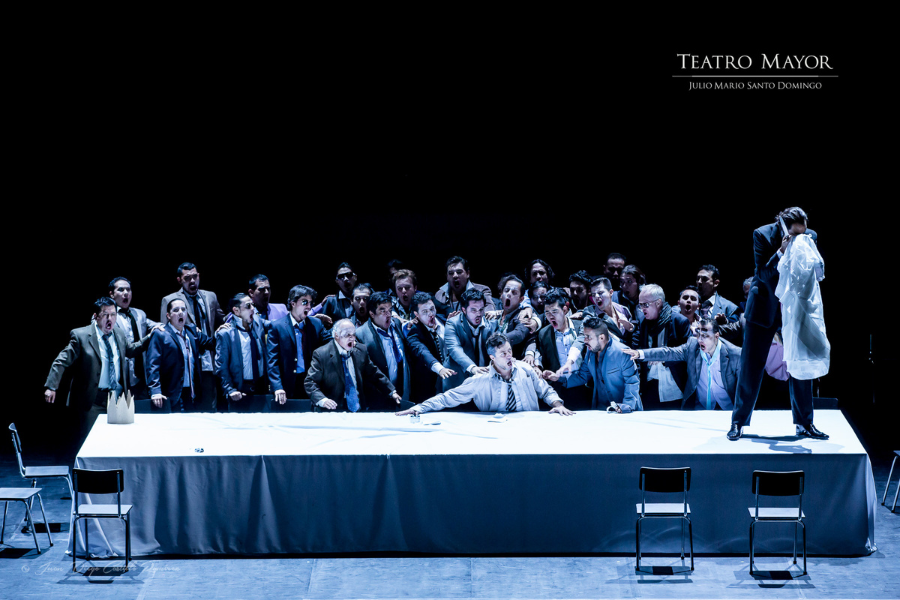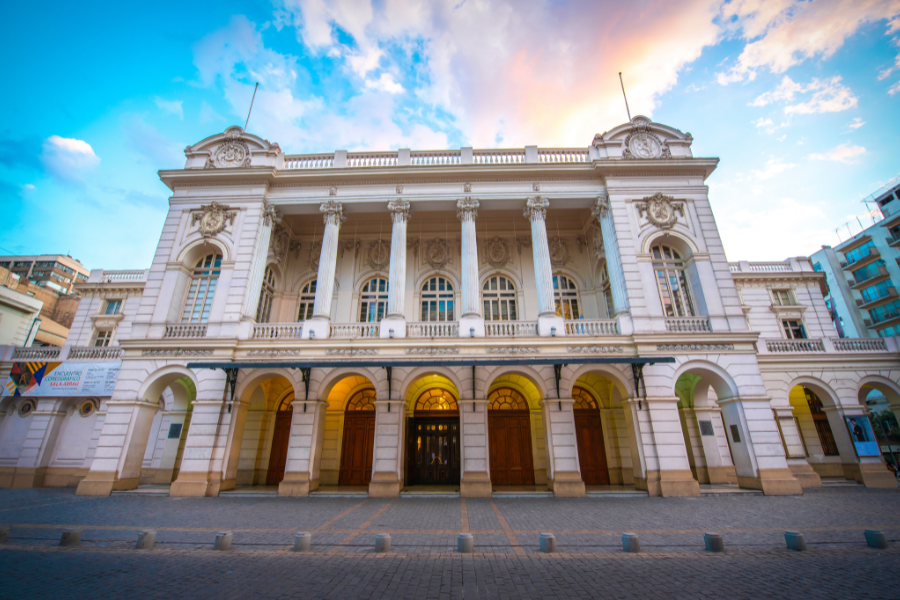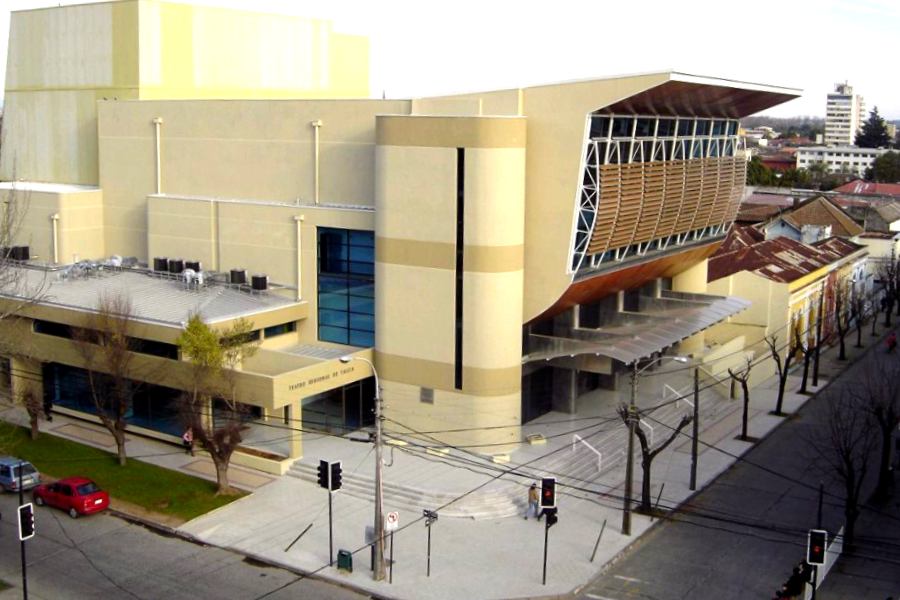Teatro Mayor Julio Mario Santo Domingo: Culture and Philanthropy for Modern Times
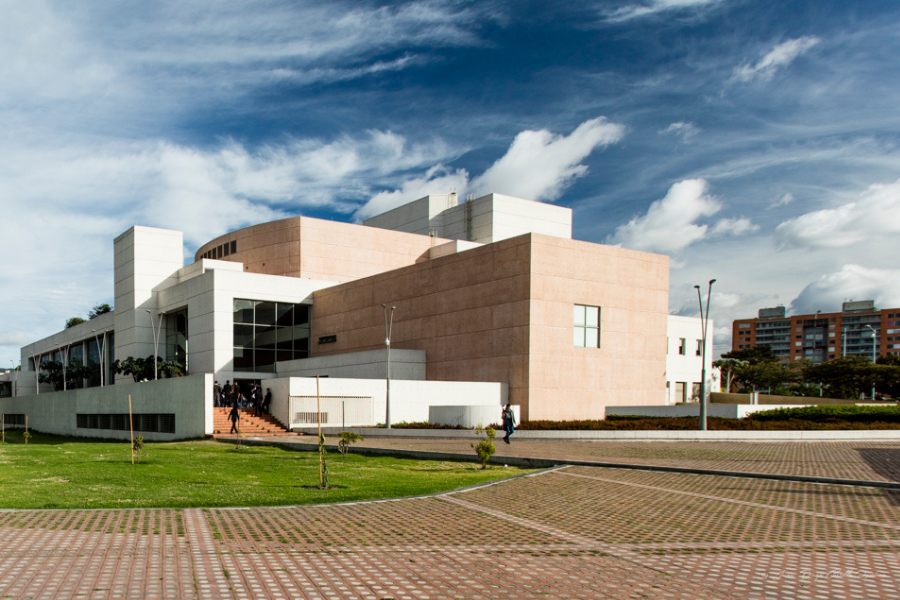
Opened on 26th May 2010, the Teatro Mayor is located within the Centro Cultural Biblioteca Pública Julio Mario Santo Domingo in the northern part of Bogotá, Colombia. The theatre maintains a programme that includes works from various media and artistic expressions, ranging from folk and popular to classical and experimental, all showcased in a modern, technologically equipped space. In its more than thirteen years of history, the Teatro Mayor merges a contemporary perspective with its roots in public-private collaboration.
By Macarena Robledo
Embedded within the Centro Cultural Biblioteca Pública Julio Mario Santo Domingo, the Teatro Mayor was inaugurated thanks to the joint efforts of both the public and private sectors.
With support from public and private co-managers, the Bogotá Mayor’s Office, through the Secretary of Culture, Recreation, and Sport and the District Institute of Arts – IDARTES, and the Santo Domingo family, as well as cross-sector allies such as Bancolombia and Caracol Televisión, and the support of Sura and the Grupo Energía de Bogotá, the Bogotá Chamber of Commerce, and donations from the Ramírez Moreno Foundations, the Teatro Mayor upholds a programme that features works from various media and artistic expressions, spanning from folk to popular, classical, and experimental.
More than Thirteen Years of History
The Centro Cultural Biblioteca Pública Julio Mario Santo Domingo is a 23,000-square-metre complex located in a 5.5-hectare public park. It comprises a library with a capacity of 150,000 books, the Teatro Mayor, which specialises in large-scale concerts and performances (opera, ballet, zarzuela, circus, theatre, etc.), and the Teatro Estudio, a multipurpose hall for chamber music concerts and experimental stage performances.
This public infrastructure of the Bogotá Mayor’s Office was donated by the Santo Domingo family to the Capital District. The management of the theatrical complex is carried out through an innovative public-private management scheme that allows, under a legal framework of shared responsibility, the combining of efforts to realise a significant cultural project within the framework of public policy.
The management, operation, and functioning of the theatres are governed by an association agreement signed between the Bogotá Mayor’s Office and the Santo Domingo family, aiming to ensure sustainability and inclusivity. The theatres are part of Bogotá’s network of venues managed by the District Institute of Arts (IDARTES), an entity affiliated with the city’s Secretary of Culture, Recreation, and Sport. The operation of the theatres is overseen by the Fundación de Amigos del Teatro Mayor (FATM) under the terms of the alliance with these entities.
There are two governing bodies involving both public and private co-managers: a Steering Committee and a Trust Committee. From the outset, it was agreed that private resources would be allocated to the operation of the venue, while public funds would be used for artistic programming.
For the project’s execution, architect Daniel Bermúdez, a renowned urban planner who had already worked on other public libraries and iconic buildings in the city, was commissioned. It was at this point, considering the social need for a new performing arts space in northern Bogotá, that the Santo Domingo family was approached to revise the megabiblioteca project and instead allocate the donation funds towards the construction of a cultural centre that would include a theatre. After evaluating with Bermúdez the feasibility of building a world-class theatre capable of hosting a variety of artistic expressions, the Santo Domingo family authorised the construction of the new complex, which now bears the family’s name.
The proposal was finalised on 30th May 2007, with the laying of the foundation stone for the new cultural centre. Nearly three years later, the Teatro Mayor Julio Mario Santo Domingo opened its doors on 26th May 2010, with an inaugural concert by the Orquesta Filarmónica de Bogotá, soprano María Alejandres, tenor Juan José Lopera, bass-baritone Valeriano Lanchas, the Coro de la Ópera de Colombia, and the Sociedad Coral Santa Cecilia.
Since then, the theatre has become one of Colombia’s main stages, achieving international recognition and consolidating itself, according to media outlets such as Radio Nacional de Colombia, “as a promoter of dialogue between the cultures of Colombia and the world.” As a model of public-private financing and management in the Southern Cone’s performing arts scene, the Teatro Mayor is proud to combine excellent programming with a commitment to safeguarding citizens’ cultural rights, promoting the dissemination of the arts to diverse audiences through social initiatives and programmes.
A Stage with a Contemporary Perspective
Located in a complex of approximately 23,000 square metres, the Centro Cultural Julio Mario Santo Domingo features three main spaces: the Library, the Teatro Mayor, and the Teatro Estudio. Designed for large-scale performances, the Teatro Mayor has a capacity of 1,303 spectators. The orchestra pit can be raised to expand the stage or levelled with the auditorium to increase seating capacity.
More specifically, according to Bermúdez, the Teatro Mayor was constructed with the aim of ensuring comfort for both the audience and the artists. This is evident in features such as spacious dressing rooms, warm-up rooms, and an orchestra pit; the carefully arranged seating in the auditorium – configured to provide optimal visibility from various points; and the complexity of the stage machinery, which enables various lighting, scenographic, and mechanical effects.
A distinguishing feature of the Teatro Mayor compared to other venues – particularly heritage ones – is its utilisation of modern technological possibilities. In addition to contemporary lighting and stage control elements, it boasts an advanced sound system, implemented in November of the previous year, with over thirty speakers and subwoofers to ensure a high-quality, immersive listening experience, with entirely digital control and processing tools.
In late 2023, the Teatro Mayor upgraded its acoustic amplification system: it acquired a system from d&b audiotechnik with 34 XSL8 series speakers and digital processing modules. This system is at the forefront of technological efficiency and sound directivity.
Another notable part of this complex is the Teatro Estudio, a box-like space with a maximum capacity of 329 spectators, equipped with retractable seating that allows the theatre to be transformed into an empty space ideal for presenting unconventional interactive works, masterclasses in dance, or exhibitions, among other uses.
Diverse Programming
This series of technological implementations has allowed the Teatro Mayor to become an ideal space for staging a repertoire as diverse and eclectic as its regular programming. Divided into five seasons – namely, music, dance, theatre, festivals, and family – the historical, stylistic, and media diversity of the shows reflects the theatre’s administration’s interest in fostering a plural cultural dialogue. Thus, the stage hosts performances ranging from classical to popular music, including opera, dance, ballet, theatre, and even circus and miscellaneous shows.
A key priority for the Teatro is the development of future audiences through programmes aimed at children, youth, and families, designed to attract local residents and those without economic means or a natural interest in cultural activities.
In this vein, the Teatro Mayor also features a mediation component that provides relevant contextual information to enrich the experience. An example is the social programme Teatropedia, which offers activities for schools and families based on the performing arts.
The musical programming includes symphonic, lyrical, jazz, “great soloists,” “voices of the world,” and “Colombia is Music” seasons. These programmes, which confront classical with popular and even folk realms, are developed with the participation of various Colombian and international musical performers, enhancing the cultural centre’s international connections. This has been reflected, for instance, in productions such as Rigoletto (2015) and Orfeo ed Euridice (2017), presented in Colombia thanks to a collaboration agreement between the Teatro Mayor and the Opernhaus Zürich.
More recently, the Teatro Mayor has presented La vida es sueño (2023), an opera by Juan Pablo Carreño with a libretto by Iván Olano based on Pedro Calderón de la Barca’s work, produced in collaboration with the Ibero-American Festival of the Golden Age «Clásicos en Alcalá» and the orchestra La Chapelle Harmonique. Another opera classic recently staged is Der Rosenkavalier (2018) by Richard Strauss with a libretto by Hugo von Hofmannsthal, which was also a co-production, this time with the Ópera de Colombia, the Teatro Municipal de Santiago, and the Orquesta Filarmónica de Bogotá.
Similarly, the dance programming includes classical ballet pieces as well as contemporary dance, flamenco, and Colombian folk dances. Additionally, the theatre hosts a spoken theatre season, presenting a range of productions from classical or “universal” theatre to new works by Colombian and international playwrights and directors.
Thus, with over a decade of activity, the Teatro Mayor Julio Mario Santo Domingo, currently directed by Ramiro Osorio Fonseca, has established itself as a public participation initiative, financed and managed under a mixed contribution model.
To illustrate this, statistics show that in its first decade alone, the theatre held more than 1,536 performances, featuring 35,063 artists from 957 companies across 66 countries, and consolidated a total of 27 co-productions. This number continues to rise, reflecting its role as a venue with significant artistic activity.


